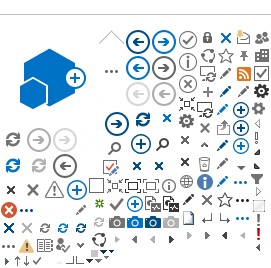| 1726 | PURESBio - Prozessverständnis und Nutzung von Pflanzenrückständen für eine nachhaltige Produktion von Pflanzenbiomasse, Arbeitspaket 7: Ableitung von Nutzungsempfehlungen für Reststoffe | PURESBio - Process understanding and usage of residues for sustainable plant biomass production. Workpackage 7, determination of reccomendations for residues use | 01/08/2014 00:00:00 | 31/03/2018 00:00:00 | abgeschlossen | completed | Leibniz-Zentrum für Agrarlandschaftsforschung (ZALF) e. V. | Leibniz Centre for Agricultural Landscape Research (ZALF) | x0x63x25x | Wurbs, Angelika; Lana, Marcos | x302x1081x | <div class='ntm_ZAL'>ZAL</div> | | | 2014 | PURESBio - Prozessverständnis und Nutzung von Pflanzenrückständen für eine nachhaltige Produktion von Pflanzenbiomasse, Arbeitspaket 7: Ableitung von Nutzungsempfehlungen für Reststoffe PURESBio - Process understanding and usage of residues for sustainable plant biomass production. Workpackage 7, determination of reccomendations for residues use Leibniz-Zentrum für Agrarlandschaftsforschung (ZALF) e. V. Wurbs, Angelika; Lana, Marcos Drittmittel Leibniz Centre for Agricultural Landscape Research (ZALF) completed abgeschlossen <div class="ExternalClass25CEABD0C56D4FB2AFF1E139A3099979">Das Potenzial der Verwertung organischer Reststoffe aus der landwirtschaftlichen Produktion für die Aufwertung von landwirtschaftlichen, insbesondere marginalen Standorten (d.h. ertragsschwache, nährstoffarme und mit geringem Humusanteil) zur Steigerung der Flächenproduktivität.</div> <div class="ExternalClassDA827A8FE46C44FB8A38BC96FA489EFF">Assess the potential of organic residues from sugar-cane production in the agricultural nutrient management, especially in marginal soils (low productive, nutrient poor and with low levels of soil organic matter), for improvement of field productivity.</div> BMBF3 PURESBio <div class="ExternalClass1044BFFF-7F78-4BAE-9BA7-D81E8299588E"><ul><li>2017 Landnutzung und Wirkungen</li></ul></div> <div class="ExternalClass7760ACB0-70B7-4134-9470-57DCFA8F0E03"><ul><li>CTBE - Brazilian Bioethanol Science and Technology Laboratory</li><li>Embrapa Temperate Agriculture</li><li>Forschungszentrum Jülich</li><li>IFG - Federal Institute of Goiás, Campus Goiânia</li><li>UFG - Federal University of Goiás, Agronomy Department </li></ul></div> <div class="ExternalClass4E7BCE99-1E99-45AE-8AD1-23350F3E7E61"><ul><li>BMBF-Verbundprojekte</li></ul></div> <div class="ExternalClass65B66EFE-DA9B-4B42-9A88-1F1390E31F63"><ul><li>Projektträger Jülich (BMBF-Förderung)</li></ul></div> <div class="ExternalClassB1D9DE51-D676-4FCA-93F3-1A8BF484262A"></div> | <div class="ExternalClass25CEABD0C56D4FB2AFF1E139A3099979">Das Potenzial der Verwertung organischer Reststoffe aus der landwirtschaftlichen Produktion für die Aufwertung von landwirtschaftlichen, insbesondere marginalen Standorten (d.h. ertragsschwache, nährstoffarme und mit geringem Humusanteil) zur Steigerung der Flächenproduktivität.</div> | <div class="ExternalClassDA827A8FE46C44FB8A38BC96FA489EFF">Assess the potential of organic residues from sugar-cane production in the agricultural nutrient management, especially in marginal soils (low productive, nutrient poor and with low levels of soil organic matter), for improvement of field productivity.</div> | <div class="ExternalClass4B69AAC8-B588-4199-BDE2-23D88D42E68C"><ul><li>Inst. für Landnutzungssysteme</li><li>Inst. für Landschaftssystemanalyse</li></ul></div> | <div class="ExternalClass7840E63A-16FA-46AB-AC3B-3E593D9C3ADD"><ul><li>Inst. of Land Use Systems</li><li>Inst. of Landscape Systems Analysis</li></ul></div> | <div class="ExternalClass59B85449-11EA-45ED-B27E-DCF67BFB670F">Dr. Marcos Lana; Dr. Angelika Wurbs</div> | Wurbs, Angelika | <div class="ExternalClass6BD24B44-2BC9-4411-B586-C267405AE269">Dr. Angelika Wurbs</a></div> | <div class="ExternalClass1044BFFF-7F78-4BAE-9BA7-D81E8299588E"><ul><li>2017 Landnutzung und Wirkungen</li></ul></div> | <div class="ExternalClass0818A357-8114-410A-B50C-60CC7D9B8A29"><ul><li>2017 Land Use and Impacts</li></ul></div> | x263x | <div class="ExternalClass7760ACB0-70B7-4134-9470-57DCFA8F0E03"><ul><li>CTBE - Brazilian Bioethanol Science and Technology Laboratory</li><li>Embrapa Temperate Agriculture</li><li>Forschungszentrum Jülich</li><li>IFG - Federal Institute of Goiás, Campus Goiânia</li><li>UFG - Federal University of Goiás, Agronomy Department </li></ul></div> | x2222x2223x1339x2225x2227x | <div class="ExternalClass4E7BCE99-1E99-45AE-8AD1-23350F3E7E61"><ul><li>BMBF-Verbundprojekte</li></ul></div> | | Projektträger Jülich (BMBF-Förderung) | <div class="ExternalClass65B66EFE-DA9B-4B42-9A88-1F1390E31F63"><ul><li>Projektträger Jülich (BMBF-Förderung)</li></ul></div> | | 3 | 3 | | <div class="ExternalClass4786BD74-8F4F-4B5E-9F40-974CA764C4D3"><ul><li>PB3-Leitung (Leitung, Administration und Sekretariat)</li><li>Nachhaltige Landnutzung in Entwicklungsländern</li></ul></div> | <div class="ExternalClassC299F832-B46E-491E-9F8F-7A72E8D05A6E"><ul><li>Head of RA3 (head, administrative manager and secretariat)</li><li>Sustainable Land Use in Developing Countries</li></ul></div> |
